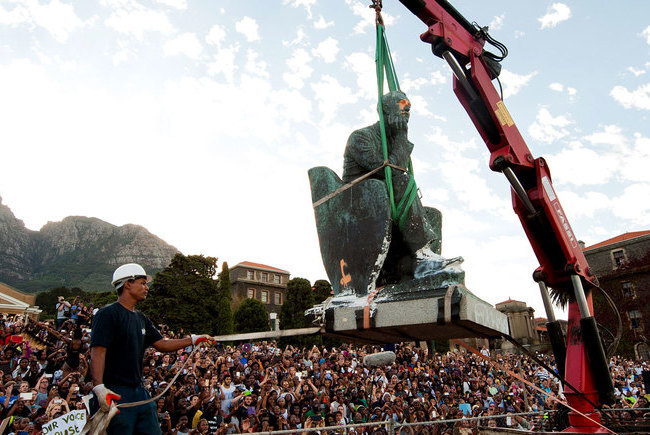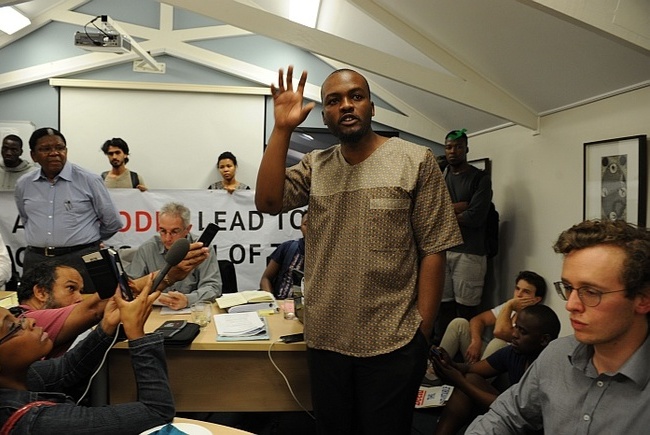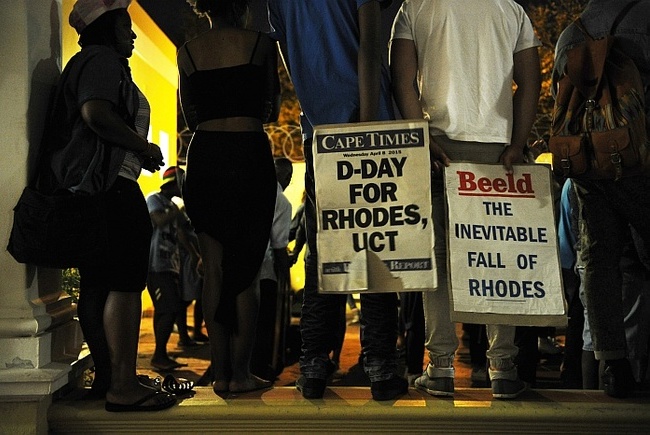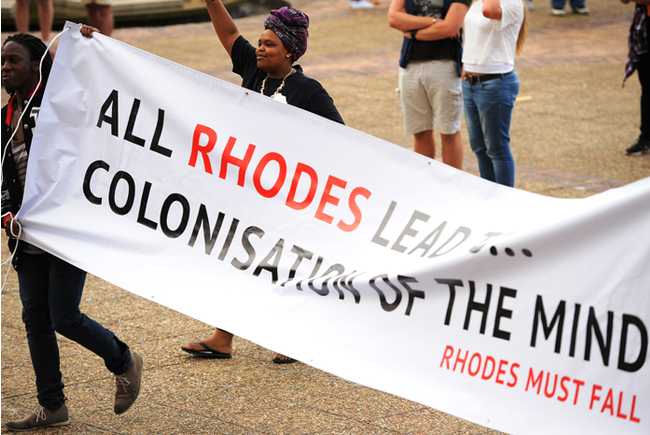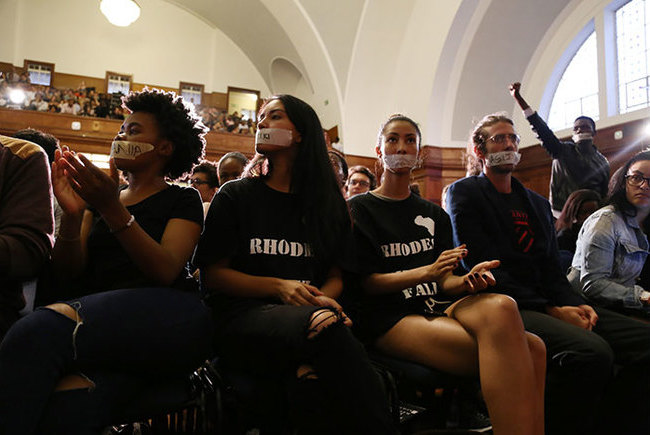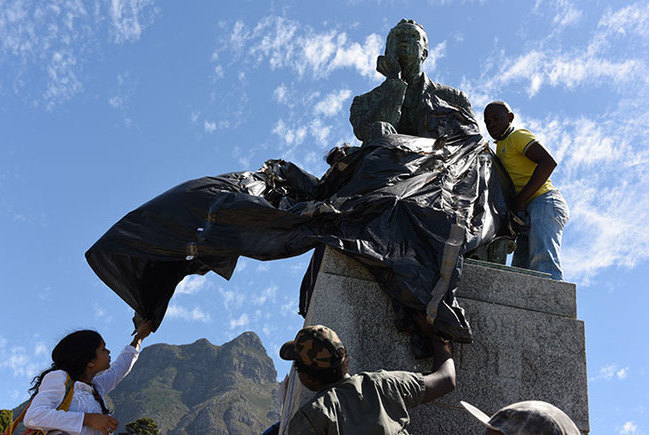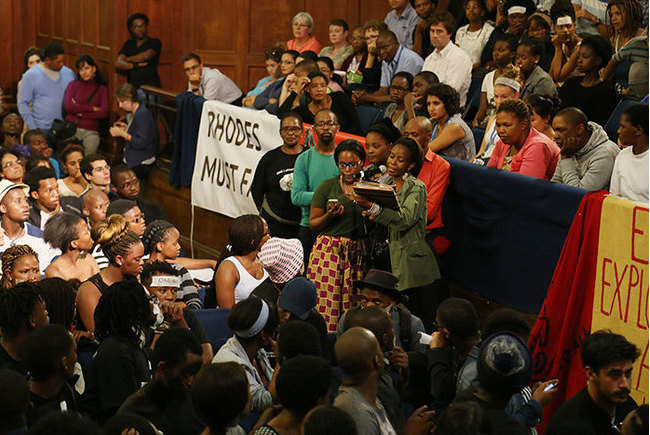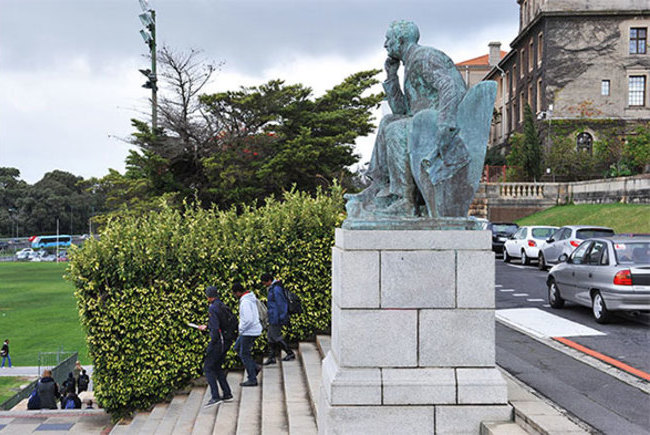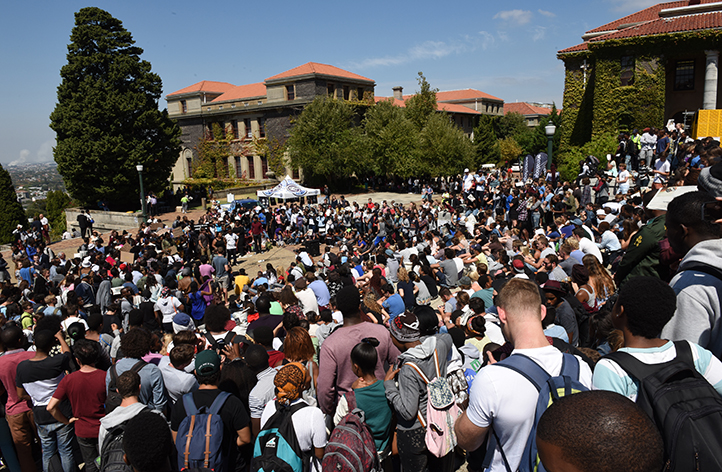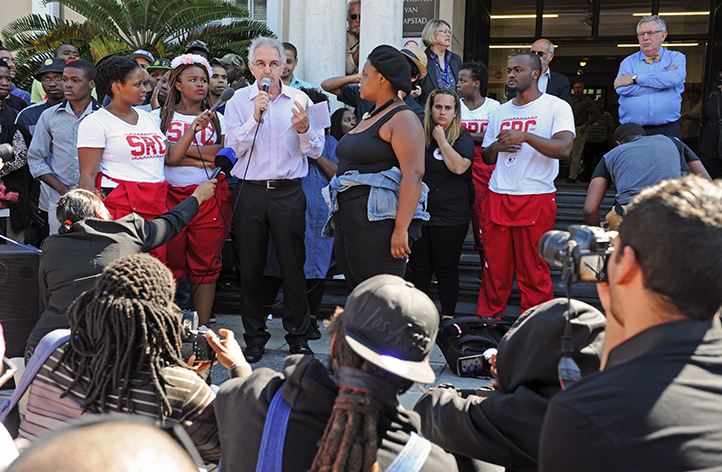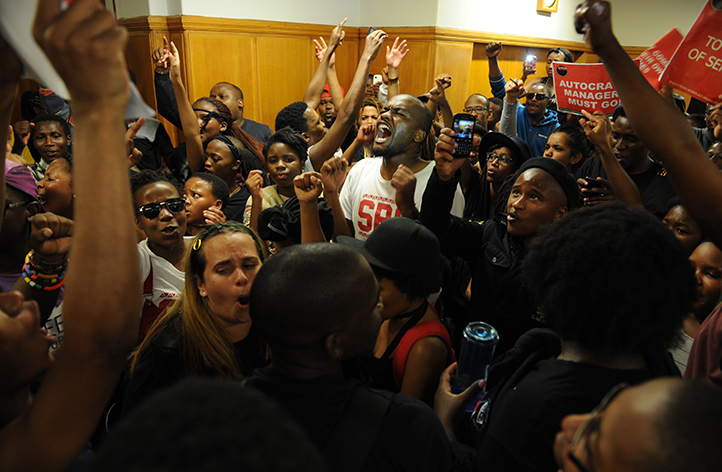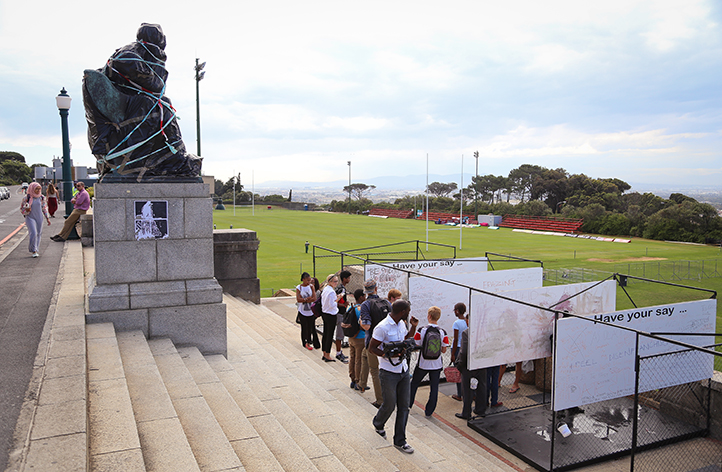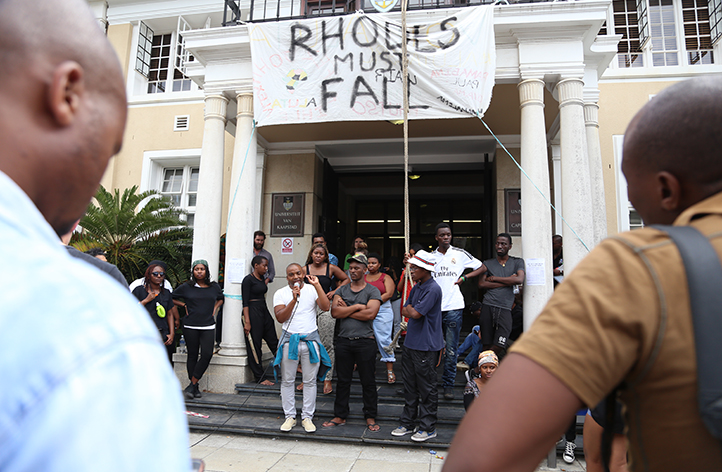Rhodes goes quietly amid jubilation
09 April 2015 | Story Abigail Calata, Yusuf Omar and Helen Swingler. Photo Michael Hammond.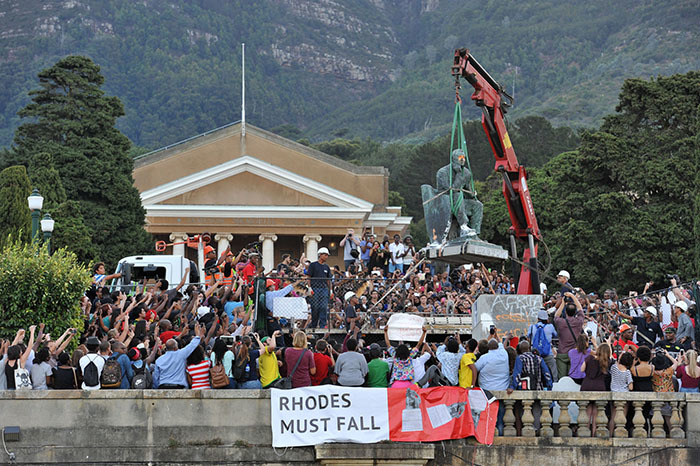
The statue of Cecil John Rhodes had finally fallen after a month of rolling protest about UCT’s colonial symbols and heritage, and calls for greater transformation.
A bound Cecil John Rhodes statue was lifted from its plinth on upper campus. It swiveled east and west moments before coming to rest on the back of a flatbed truck. And then, with an upturned bucket on his head and dripping paint and refuse, made his final exit along Madiba Circle; the event was not without its ironies.
The removal of the statue was preceded by a meeting outside Bremner where a range of speakers, from trade union representatives to protesting school students, expressed their support for the #RhodesMustFall movement. It was the meeting’s subsequent march to upper campus that electrified proceedings, as the massive group sang and stamped their approval of Rhodes’ statue being toppled from its central vantage point.
 This work is licensed under a Creative Commons Attribution-NoDerivatives 4.0 International License.
This work is licensed under a Creative Commons Attribution-NoDerivatives 4.0 International License.
Please view the republishing articles page for more information.
#RMF Scholarship Fund and Public Lecture
Following an initiative of the Rhodes Must Fall (RMF) Scholarship Committee as proposed by student activists at the University of Cape Town, the university has launched the #RMF Scholarship Fund and hosted an RMF public lecture on 9 April 2021. The lecture will be hosted annually hereafter.
The Rhodes Must Fall Scholarship Fund is a new initiative that aims to raise funding to support students engaged in scholarship around the decolonisation of higher education.
Looking back to 2015
Removing Rhodes: a photo essay from April 2015
After one month of rolling protests about UCT’s colonial symbols and heritage, and calls for greater transformation, the statue of Cecil John Rhodes was removed from campus on 9 April 2015. We looked at the events leading up to its removal through a photographer’s lens.








